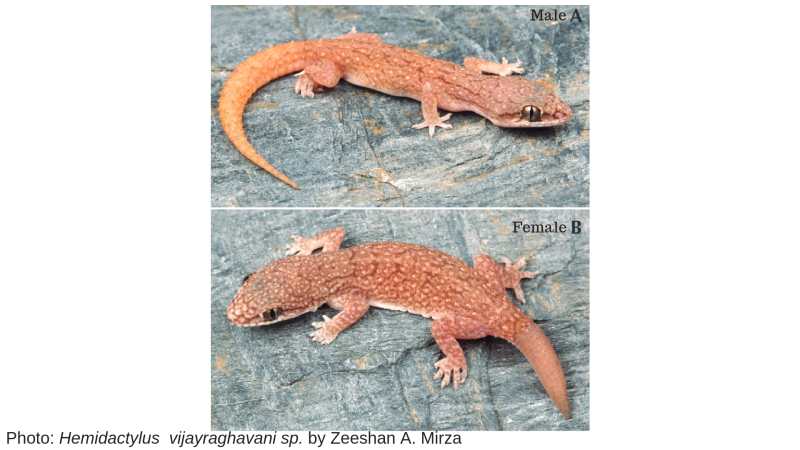
A newly discovered species of ground-dwelling gecko from Karnataka has been named Hemidactylus vijayraghavani, after Prof K VijayRaghavan, the Principal Scientific Advisor to the Government of India. Mr Zeeshan A. Mirza, a researcher from Prof VijayRaghavan’s lab at the National Centre for Biological Sciences (NCBS), Bengaluru, is the person behind this discovery. The findings of this study were published in the journal Phyllomedusa, and it was partly funded by the Singinawa Conservation Foundation and the Newby Trust Limited.
Mr Mirza, in an interview with Research Matters, shared that his primary motivation to name the species after Prof VijayRaghavan was to commemorate the scientist who is striving to enhance scientific research and education in the country. Before being appointed as the PSA, Prof VijayRaghavan served as the Director of NCBS. He is a Distinguished Professor and Fellow of the Royal Society, London.
The new species of gecko, found in the open scrub habitats of Bagalkot district of northern Karnataka, belongs to genus Hemidactylus. “Geckos of the genus Hemidactylus are represented by about 153 species, of which a clade that consists of members that are ground-dwelling, is endemic to India (except 1 species in Pakistan)”, says Mr Mirza, adding that the new species is one such ground-dwelling gecko which belongs to this clade. A clade is a group of organisms that includes a common ancestor and all its descendants. Geckos of this genus are usually known as house geckos because they quickly adapt and coexist with humans.
Hemidactylus vijayraghavani is tiny, stout and light brown in colour with a yellowish orange tinge on its tail. It closely resembles another reticulated ground gecko found in South India. Feeding on insects, these lizards actively forage in the evenings from 7 pm to 7:45 pm.
Unlike many species that are found in biodiversity hotspots like the Western Ghats and Northeast India, this new gecko was found in an unlikely place.
“It was discovered in an area that would seem like it is devoid of any life form. Discovery of a new species in such a habitat that is not protected by law brings to light the fate of wildlife outside protected areas”, says Mr Mirza, who has discovered about 37 species of lizards, scorpions, snakes and spiders so far.
While many conservation efforts are focused on national parks and wildlife sanctuaries, discoveries like this throw light on the need to focus more efforts outside protected areas as well.





